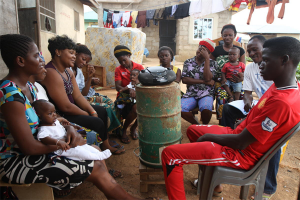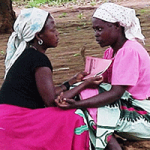Examining the Role of the Media in Global Health and Innovation; Insights from Unite for Sight
If you work in health communication, my guess is that you know the basics of writing: don’t use jargon, less is more, don’t use insiders’ language, check the spelling of names and so on. And if anyone was going to get you to do it, it was Eve Heyn, one of scores of presenters at this year’s Unite for Sight Global Health and Innovation Conference at Yale University in New Haven, CT. Her presentation, From Pitfalls to Perfection: How to Improve your Global Health Writing and Communication may have seemed basic, but the hour and a half was packed with tips on making sense of the complex language and issues that underpin global health. The biggest takeaways if you want to make a difference in communicating: know your audience; save the technical language for the experts.
The annual conference, in its 11th year, is a showcase for technical experts working in global health. The presentations followed multiple themes, with an emphasis on the development agenda, building capacity, the impact of technology on global health and a push for human-centered design. Several of the presentations are available online, including one by Futures Group’s Tara Nutley on Building Skills to Advocate for Change with Health Data. The presentation is worth a look, especially given the trend to use data to tell stories. While not specifically about the science, there were loads of references to impacting and changing behavior through communications. One example was Cal Bruns’ talk, Fingerprints & Funny Bones: How Technology, Celebrities and Marketing 3.0 helped South Africa achieve a 96% HIV Counselling and Testing rate.

A radio is placed on a drum as a radio listeners’ group sit around it in Mpape village in the outskirt of Nigeria’s capital Abuja.
© 2012 Akintunde Akinleye/NURHI, Courtesy of Photoshare
Jeffrey Sachs, Columbia University Earth Institute director and Special Advisor to Secretary General of the United Nations Ban Ki Moon, was one of several keynote speakers during the conference. He used the opportunity to unpack the post-2015 development agenda: From Millennium Development Goals to Sustainable Development Goals. It was vintage Sachs – sobering insight into the state of the planet, an emphasis on the need to eradicate poverty and a reminder that setting goals actually does make a difference. Heyn in her workshop on communication used Sachs as an example of how to communicate effectively without drowning people in jargon. She paraphrased him as saying: “7 million children die every year of stupid preventable reasons, and it makes me so angry.” Clearer than that one can’t get.
What was striking however was the relative absence of any substantial examination of the role of the media in global health and innovation. While talks on digital technology and social (read citizen) media overflowed, I attended only one presentation (Deva-Marie Beck’s Daring, Caring & Sharing with a Grassroots-to-Global Multimedia Campaign for Achieving Maternal Health of the Nightingale Initiative for Global Health) that put the media front and center. Even so, the talk focused on citizen journalism rather than more traditional forms of journalism. Admittedly, there were only two of us to cover all the presentations – myself and Alison Campbell who heads up Internews’ Global Initiatives – and we could not possibly have sat in on every one of the talks. But we came away feeling that the media as an important, if not critical, driver in global health, were underserved. Beyond Sach’s throwaway line that “the media is the most powerful essence of our consciousness,” we found little that sparked our media-tuned imaginations.
People make behavior changing decisions in 360 degree information environments. In the developing world, radio especially can be a powerful driver and motivator. As Alison noted: “News stories can absolutely enhance the power of health messaging with its ability to contextualize and illustrate the “what” with the “why”, especially when it brings community voices into the mix that evokes peer-to-peer learning.” Not either or, but rather working in tandem and in partnership with the media to amplify the message.
In a legacy assessment of the Internews in Kenya’s health media project in 2012, I had the good fortune to gauge the personal takes of 89 women and men on health news and public health service announcements. During a series of focus group discussions, 90% of the participants said that they found the news stories more compelling than the messaging, or adverts as they called them. It was not that they did not like the public service announcements or not approve of them; just that they felt that the news health stories represented more accurately their own lived experience. Although he was talking about using mobile technology, social innovation and the cloud computing in health programming, Bobby Jefferson of Futures Group said that while the technology element is important, for sustainability “the human element is even more important.” From a health communication perspective, real stories about real people, as told so powerfully in The Last Polio Ward in India.








Leave a Reply
Want to join the discussion?Feel free to contribute!